This article has been reviewed according to Science X's editorial process and policies. Editors have highlighted the following attributes while ensuring the content's credibility:
fact-checked
peer-reviewed publication
trusted source
proofread
Climate 'presses' and 'pulses' impact Magellanic penguins—a marine predator—with guidance for conservationists
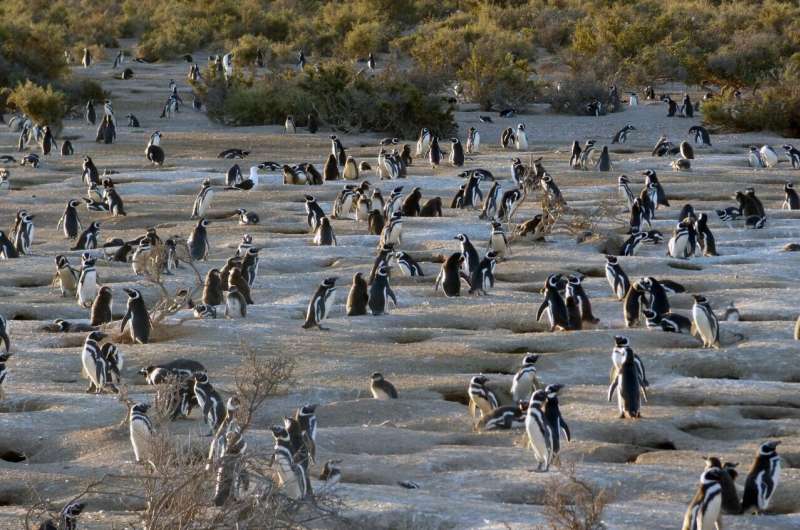
Climate change will reshape ecosystems worldwide through two types of climate events: short-term, extreme events—like a heat wave—and long-term changes, like a shift in ocean currents. Ecologists call the short-term events "pulses," and the long-term changes "presses."
Presses and pulses will likely have different effects on animal species. But how? And how will animals respond? Answering these questions is no easy feat because individual events can have dramatically divergent impacts on an animal species. Yet understanding the effects of presses and pulses is essential as conservationists and policymakers try to preserve ecosystems and safeguard biodiversity.
Researchers at the University of Washington have discovered how different presses and pulses impacted Magellanic penguins—a migratory marine predator—over nearly four decades at their historically largest breeding site in Punta Tombo, Argentina. In a paper published the week of Jan. 9 in the Proceedings of the National Academy of Sciences, the team from the UW's Center for Ecosystem Sentinels reports that, though individual presses and pulses impacted penguins in a variety of ways, both were equally important for the future survival of the penguin population. They also found that these types of climate changes, taken together, are leading to an overall population decline at this particular site.
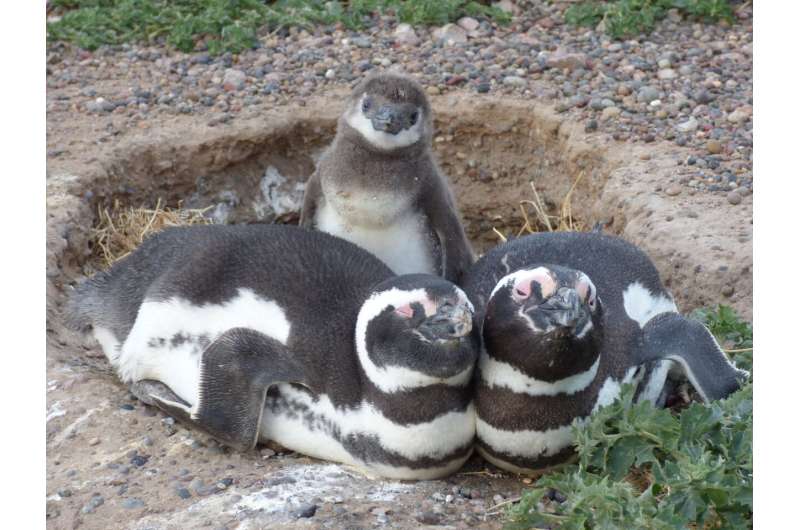
"We found that penguin survival doesn't rest solely—or even largely—on one or a few climate effects," said lead author T.J. Clark-Wolf, a UW postdoctoral researcher in biology and center scientist. "Instead, many different presses and pulses impact penguin reproduction and survival over time."
The study analyzed data collected at Punta Tombo from 1982 to 2019 by co-author Dee Boersma, founder of the Center for Ecosystem Sentinels and a UW professor of biology, and collaborators. The data include:
- survival and reproductive success for nearly 54,000 penguins at the site, which historically is where hundreds of thousands of Magellanic penguins have come to breed each summer
- climate conditions during each breeding season
- ocean conditions off the coast of Punta Tombo, where adults feed during the breeding season and bring food back to the nest to feed their chicks
- offshore ocean conditions along the coast of South America, where adults and juveniles feed when migrating outside of the breeding season
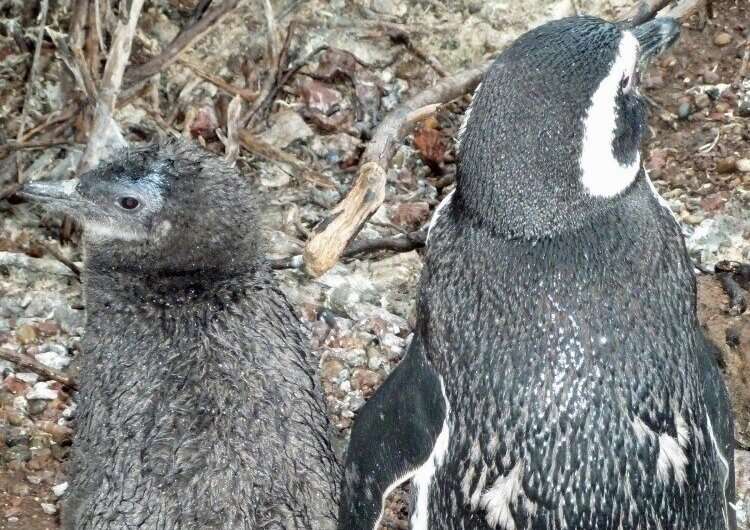
Clark-Wolf and senior author Briana Abrahms, a UW assistant professor of biology, folded these data into an integrated population model that parsed out the effects of separate presses and pulses on penguin survival over time. They found that different climate effects had distinct impacts on the Punta Tombo population. For example, heat waves—a climate pulse—have a detrimental effect on the population by killing both adults and chicks, as illustrated by a 2019 single-day heat wave at Punta Tombo that killed more than 350 penguins. A climate press, increased rainfall at the site, also negatively impacted the population, because storms during the breeding season kill chicks due to exposure.
The gradual weakening of the plume of silt expelled into the ocean by the Río de la Plata, the second largest river basin in South America, is one press that positively affected penguin survival. This press impacts the penguins' winter feeding waters off the coast of northern Argentina, Uruguay and Brazil. Past research by Ginger Rebstock, a co-author on the new study and a UW research scientist, has indicated that a weaker plume may make it easier for penguins, particularly females, to catch enough food each winter and return to the breeding site in prime condition.
But the positive effects of a weakening plume could not overcome the negative effects of other climate events at Punta Tombo, which over nearly four decades has become warmer and wetter. The number of breeding pairs at the site has declined from a high of approximately 400,000 in the early 1980s to about 150,000 in 2019.
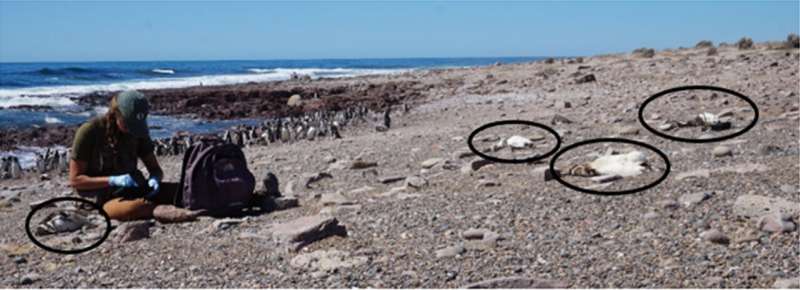
"This colony will be 100 years old in 2024, but we finished another on-the-ground survey in late October at Punta Tombo and its numbers continue to decline," said Boersma. "The penguins are instead moving north to be closer to their food."
Surveys have reported that Magellanic penguins are establishing other breeding sites farther north on the South American coast in search of better foraging opportunities.
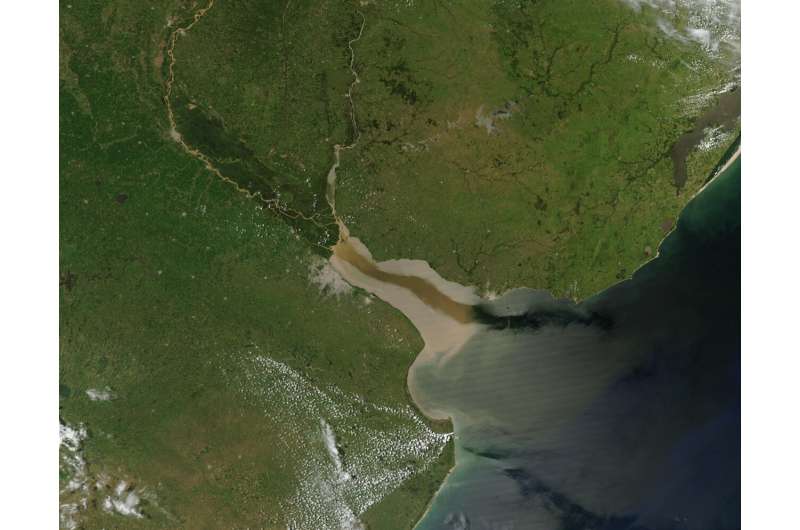
Understanding how these presses and pulses shape this population is crucial for informing conservation efforts, the researchers said.
"For conservation to be most effective, we need to know where, when and how to apply our limited resources," said Abrahms. "Information generated by this study tells us which climate effects we need to worry about and which ones we don't—and therefore can help us focus on measures that we know will have a positive impact."
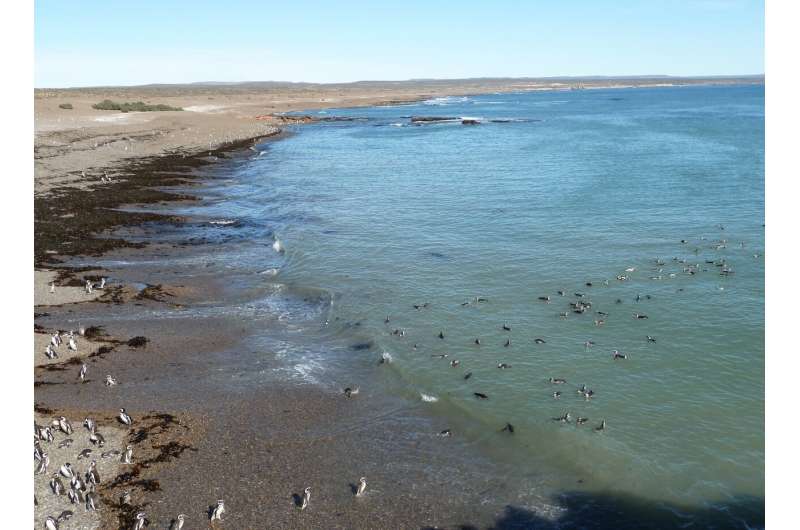
The decades of data faithfully collected at Punta Tombo made it possible for the team to consider the effects of long-term climate changes and extreme events in combination, and as a result, to better predict how climate will impact this population in the future. It is this same approach, they believe, that can help conservationists and scientists understand how climate shifts will shape other long-lived animal species across our warming globe.
More information: Climate presses and pulses mediate the decline of a migratory predator, Proceedings of the National Academy of Sciences (2023). dx.doi.org/10.1073/pnas.2209821120
Journal information: Proceedings of the National Academy of Sciences
Provided by University of Washington




















